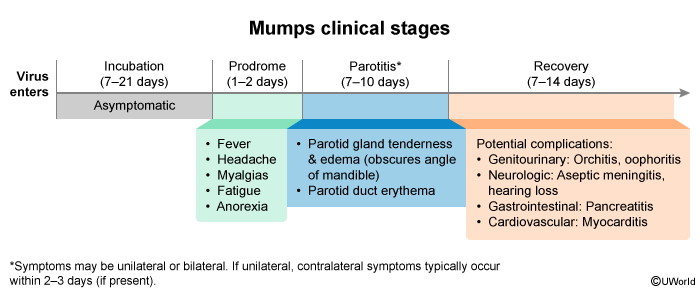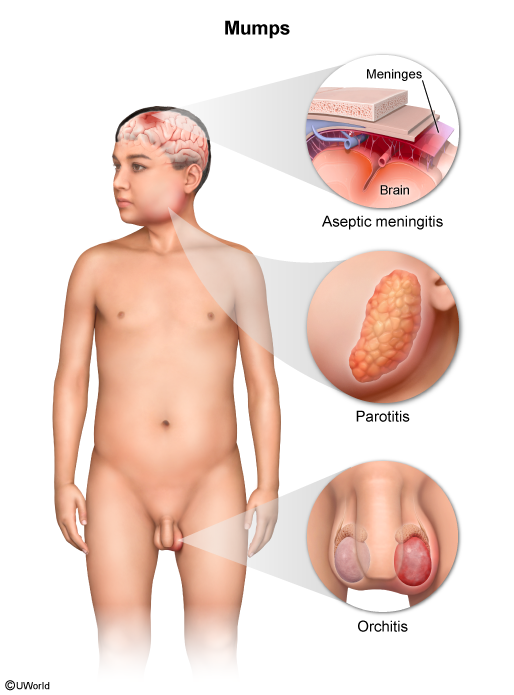Mumps
Article Sections
Introduction
Mumps is a vaccine-preventable disease caused by a single-stranded RNA paramyxovirus, typically manifesting with fever, malaise, myalgia, and parotid swelling. Mumps is uncommon due to widespread vaccination, but outbreaks can occur among unvaccinated populations.
Pathophysiology and risk factors
The mumps virus is highly infectious and spreads via contact with respiratory droplets, saliva, or fomites. The incubation period ranges from 7-21 days; however, viral shedding begins prior to the onset of symptoms, leading to widespread transmission. Once contracted, the mumps virus replicates in respiratory mucosal epithelium and lymphatic tissue, leading to viremia and systemic infection.
Risk factors for mumps include being unvaccinated and in close contact with infected individuals. Outbreaks are more common in settings where people live closely together, such as college campuses.
Continue Learning with UWorld
Get the full Mumps article plus rich visuals, real-world cases, and in-depth insights from medical experts, all available through the UWorld Medical Library.
Figures

